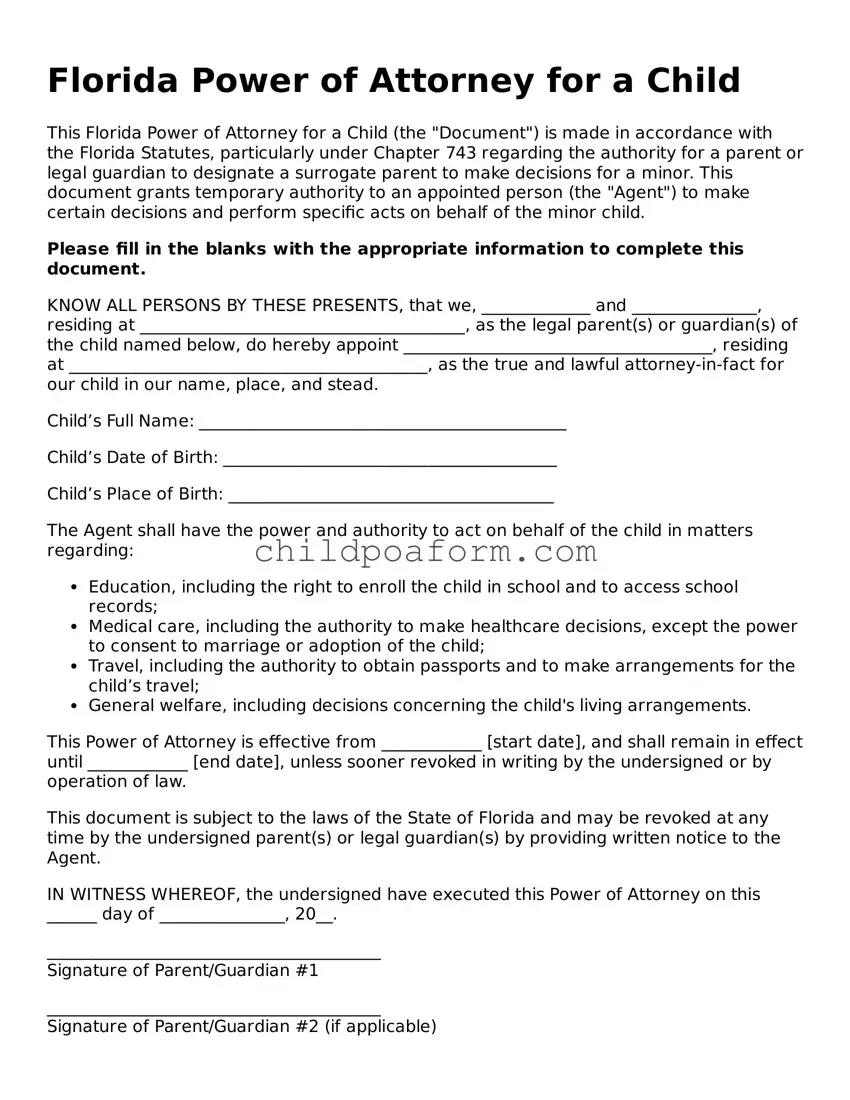Instructions on Utilizing Florida Power of Attorney for a Child
When it becomes necessary to legally grant someone authority to make decisions on behalf of your child, the Florida Power of Attorney for a Child form is a necessary document. This process might seem daunting, but with clear instructions, it can be completed accurately and effectively. The following steps will guide you through the process, ensuring you fill out the form correctly. By carefully following each step, you can confidently delegate the responsibility of your child’s welfare, knowing that their needs will be met in your absence.
- Start by entering the current date at the top of the form.
- Write the full name and address of the parent or legal guardian granting the power of attorney in the designated section.
- Insert the full name and address of the individual who will be receiving the power of attorney to act on behalf of the child.
- Specify the child’s full name and date of birth to clearly identify whom the form concerns.
- Detail the specific powers being granted. This section allows you to specify which decisions the appointed individual can make regarding the child’s welfare, education, and healthcare. Be as clear and thorough as possible.
- Include the time period for which the power of attorney will be valid. If there’s a specific start and end date, make sure these are recorded accurately.
- If there are any specific conditions or restrictions you want to apply to the power of attorney, list them clearly in the designated area of the form. This could include limitations on the decisions the designated individual can make or certain actions they are restricted from carrying out.
- Both the parent or legal guardian granting the power and the individual receiving it must sign the form in the presence of a notary public. Ensure all signatures are placed where indicated.
- Have the form notarized. This typically involves the notary public verifying the identity of the signatories and witnessing the signing of the document. The notary will then seal the document, making it legally binding.
- Finally, distribute copies of the notarized form as appropriate. Ensure the individual receiving the power of attorney has a copy, and consider providing copies to relevant family members or institutions, such as your child’s school or healthcare provider, as needed.
It's important to remember that the Florida Power of Attorney for a Child form is a significant legal document. It temporarily transfers parental rights and responsibilities to another individual. Therefore, it's advisable to consult with a legal professional if you have any concerns or questions before completing the form. This ensures that all actions taken are in the best interest of the child and in accordance with Florida law.
